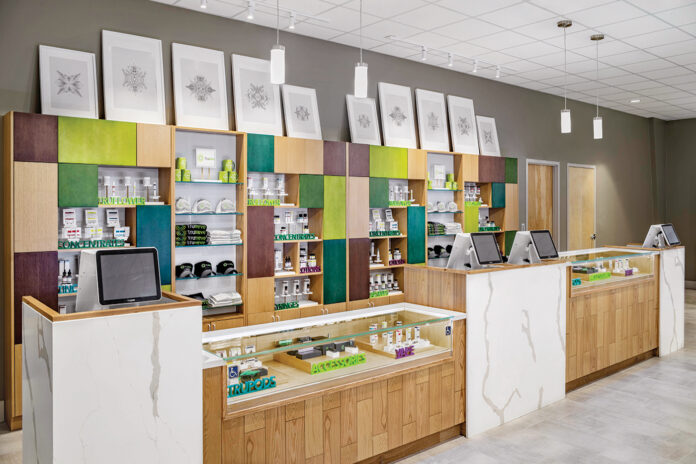The art and science of product display can exert a powerful influence on the bottom line.
In an increasingly legal industry, cannabis retail operators have more opportunity than ever to be vocal about their brands and set themselves apart in an oversaturated, highly competitive market.
A huge piece of the puzzle is keeping up with industry trends and allowing retail space to reflect shifts in a way that rings true to brand identity—something Columbus, Ohio-based visual merchandising agency ZenGenius has mastered. Project Manager Meg Lefeld and Director of Visual Merchandising Stephanie Bair-Garant have watched the cannabis industry grow and change over their six- and ten-year (respectively) tenures.
“ZenGenius got into cannabis after we partnered with designer Megan Stone [of High Road Design Studio], whose whole business was designing these beautiful dispensary spaces for retailers who were passionate about their products but didn’t have any retail experience,” Lefeld said. “As she was designing these spaces, she realized the owners didn’t really know how to display their products.
“The concept of visual merchandising is still really new in the industry, but it’s really what makes your space,” she continued. “That’s what led to our first big client, Trulieve, who we began working with in 2017. From there, more people began hearing about us, from big corporations to mom-and-pop shops that need a little guidance.”
Here, Bair-Garant and Lefeld offer insight and advice about what visual merchandising looks like in the cannabis space, the increasing importance of brand identity in the legal market, and emerging industry trends to keep an eye on in 2022 and beyond.
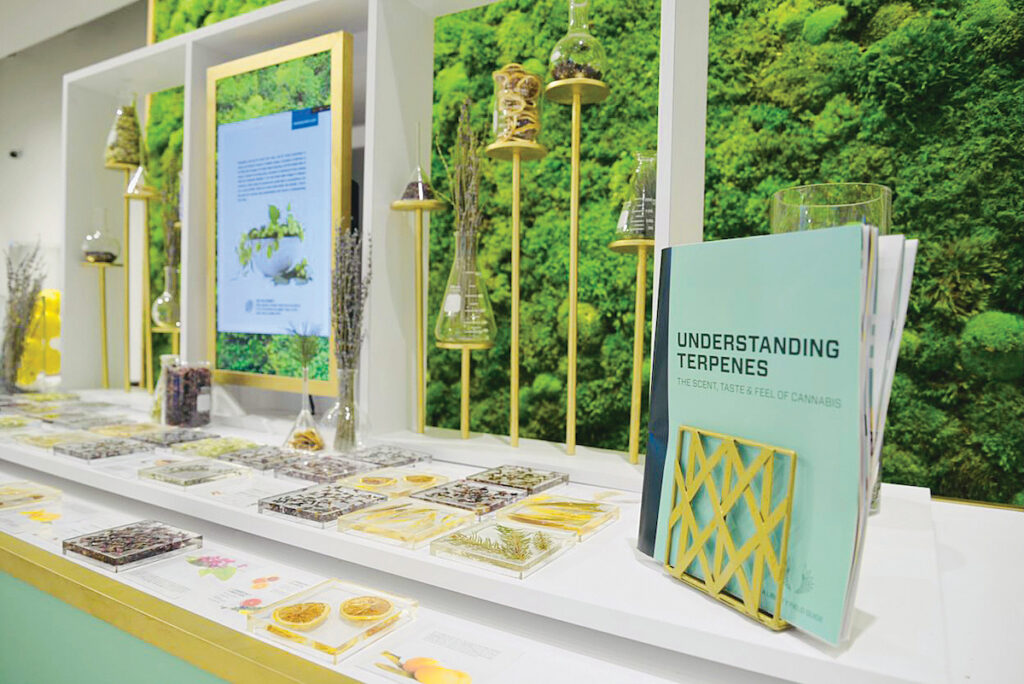
Why is visual merchandising important for dispensaries?
Lefeld: A lot of people in cannabis still don’t know what visual merchandising is. It’s often been an afterthought: People focus on getting their store open as quickly as possible, and then visual merchandising is factored in later down the line. I’m so happy to say I think people are beginning to see what it can do.
I think for a while the mindset was “If we sell products, people will come.” But as competition grows and the industry evolves, customers are being much more selective with where they spend their money. If they have a bad experience at a dispensary or are confused or overwhelmed by the product layout, they’ll simply go to another one down the road.
Bair-Garant: The industry is shifting more toward an emphasis on the customer journey: what you’re enticed by, how you feel walking into a store, and how the staff makes you feel. That’s going to become more and more important.
What emerging trends do brands and dispensaries need to pay attention to when considering a store’s layout and product selection?
Lefeld: Efforts into brand awareness and identity are continuing to grow and become stronger. Dispensaries have a chance to reinforce brand awareness through propping, signage, display solutions, risers, trays, layering, graphics, fixture liners, display liners, and any sort of graphic layer.
I think we’ll also see more layers of technology, and that’s universal. Something I love that Columbia Care recently has incorporated is Forage, an interactive digital tool that provides personalized strain and product suggestions based on how the customer wants to feel. I tested it out at a store recently, and it’s just incredible. If you know you don’t want flower or edibles or vapes, you can cross those categories out. You can also fill in your goal: increasing sleep, reducing anxiety, etc., and the tool will recommend a variety of products for you based on that assessment. Not only is this great for the customer’s journey, but it allows the dispensaries to understand their customers and how those people want to shop.
Another trend we’re noticing is an increased desire for information about terpenes. I think there will be more research and more knowledge available about how terpenes can make certain strains smell or taste. More information leads to more awareness, and knowledge is power.
Bair-Garant: Packaging is something brands are highly aware of now. We try to recommend sustainable materials; wherever possible, that’s our first choice. The second thing we focus on is what’s available locally. This ties into sustainability: thinking locally. We’ll continue to see that concept grow, whether it’s utilizing local vendors or working with local artists and artisans within the dispensary space. We look at materials that are already available and try to be very thoughtful as we select.
One thing I think we’re going to see in the very near future is “wellness areas” featuring skincare and body wellness products being incorporated into dispensaries. Also, more of a marriage between products and education. Think of a wine sommelier, marrying science and art and figuring out how we can share that information and make it interactive.
On the other hand, some people love to navigate dispensaries by themselves without being interrupted, so how can we share the information we have in a way that empowers them to understand on their own?
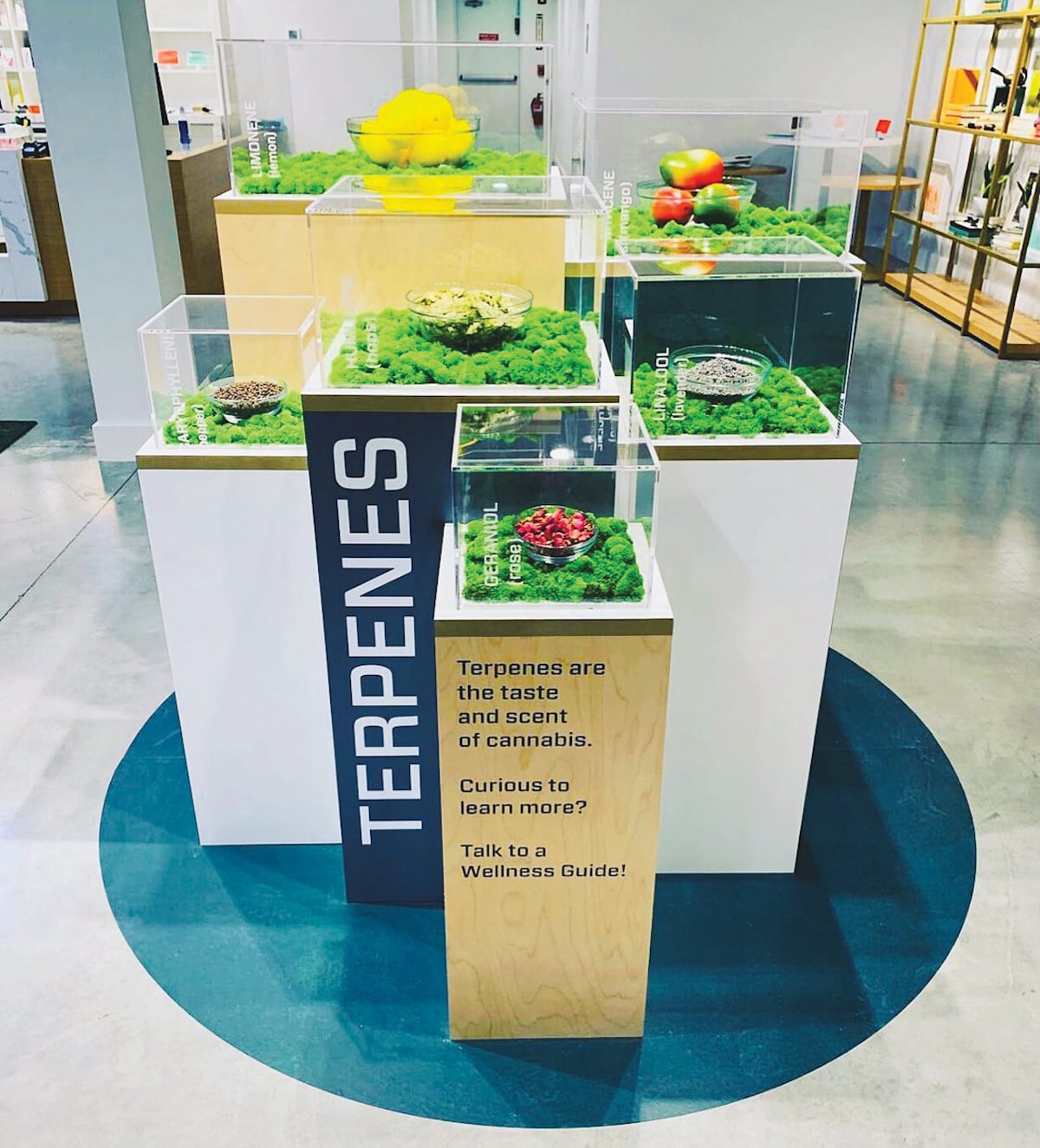
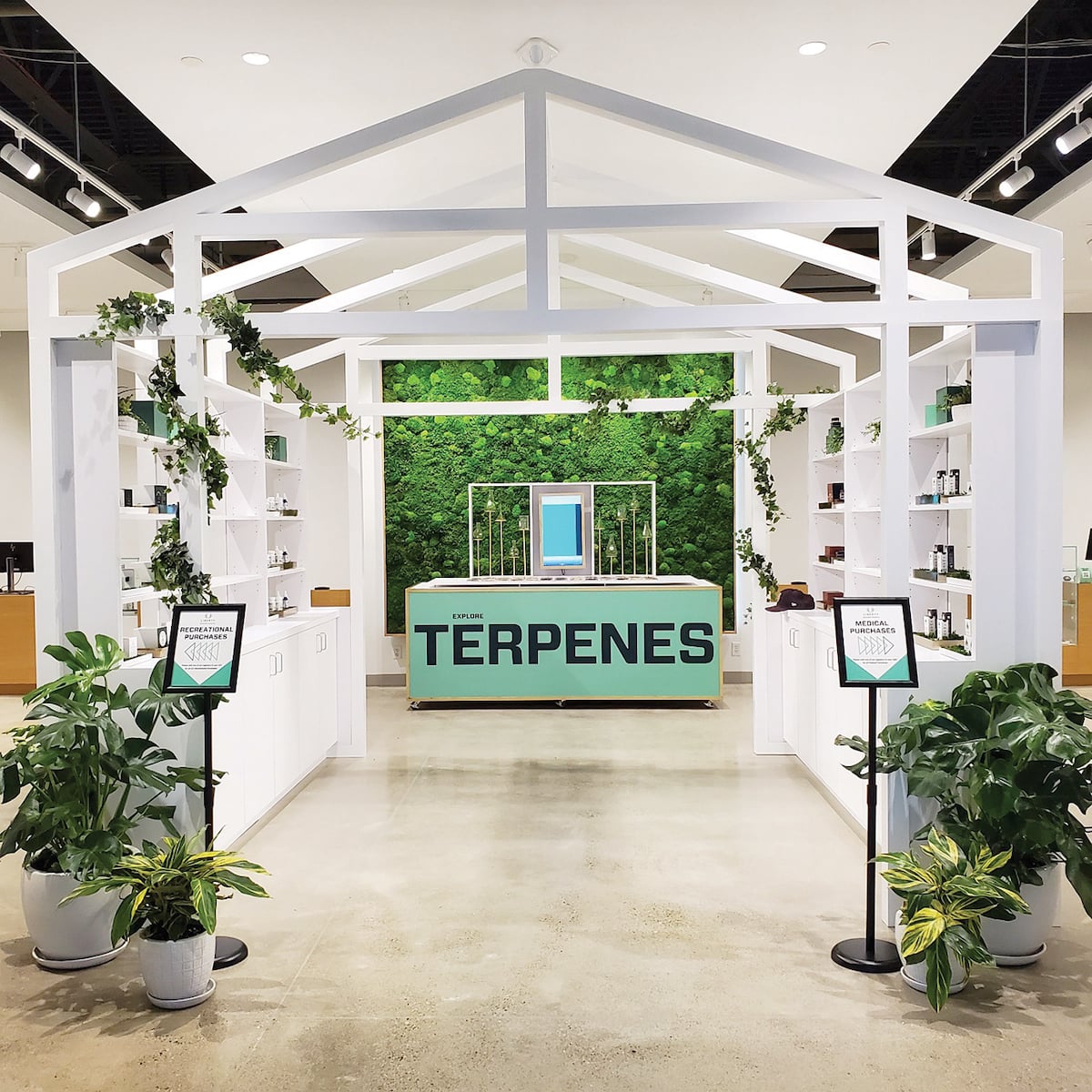
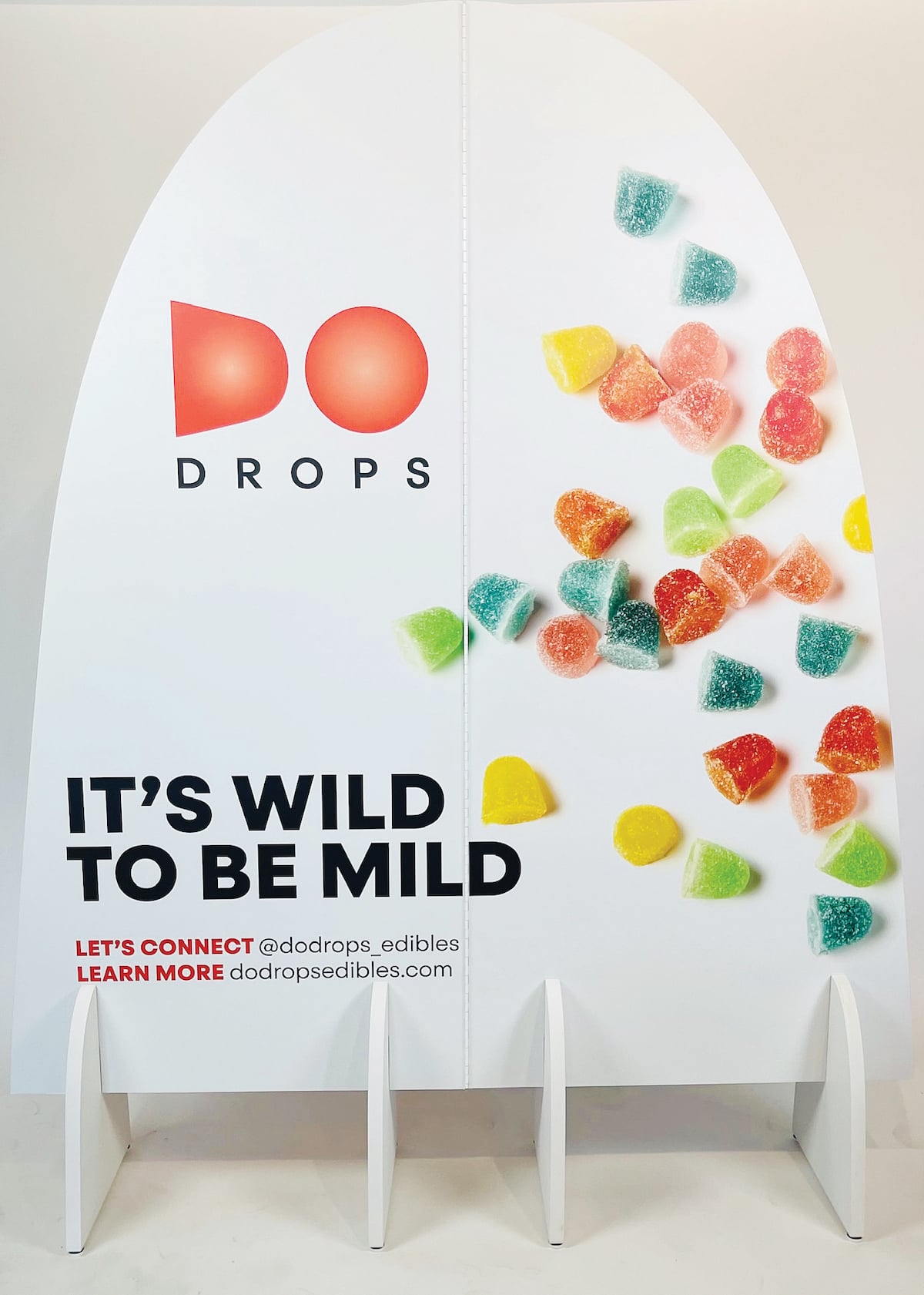
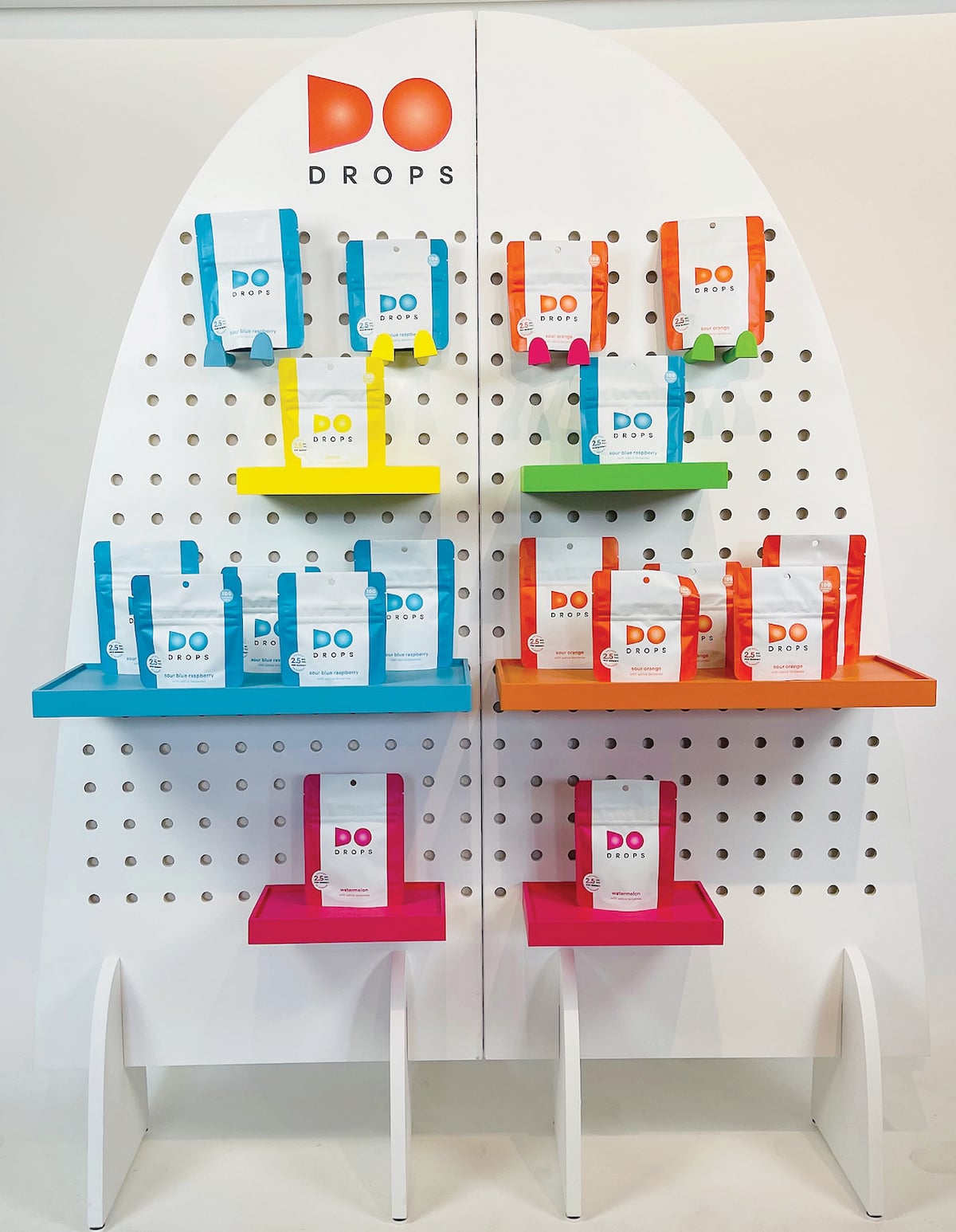
Will these trends vary from region to region?
Bair-Garant: It’s all dependent on laws. Each city and county is different, even down to what we’re allowed to do with signage. In California, going to a dispensary is like going to Target, but in Massachusetts you still have to wait in a waiting room, only a certain number of people are allowed into the back room at a time, and dummy packaging still needs to be utilized.
Dispensaries in California carry several brands and highlight many different products, but one brand might have their own shop and be branded totally independently, like Cookies or dosist. These stores are starting to pop up next to each other, sort of like a “Main street area” for cannabis. As laws evolve across the nation, I think we’re going to see more of that.
Lefeld: Each time we visit a location, we have to rework our design to fit the laws and regulations of that state. It’s moving so fast, and we’re constantly learning new things and adjusting, all while trying to stay on brand. But California is definitely a model we keep our eyes on.
What are some pro tips for buyers?
Bair-Garant: Focus on “pre-marketing”: scoping things out and seeing what exists. In Massachusetts, we’ve learned a lot of stores we’ve worked with are close to a college campus. Maybe it’s not about being close to a college, per se, but it’s safe to assume it’s going to be a cool, hip, more progressive area, and dispensaries and brands likely will be welcomed into that community.
Look at surrounding areas and competitors. Where do you want to be, what is your niche, and how do you want to live in this space?
Lefeld: Competitor research and knowing the target market in your region are key. Also, make sure your store is fully ready when you open your doors. Remember the importance of a first impression: In an area where there are dispensaries all over, the first impression is everything. Make sure your staff is trained, informed, and excited to be there. That really sets the tone. Be a good neighbor.







